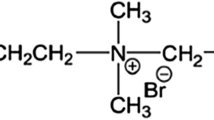Abstract
Aim: This was to evaluate the antibacterial properties of four different compomers, using direct contact test (DCT) and agar diffusion test (ADT). Compomers (Polyacid Modified Composite Resin) form a group of dental restorative materials which were developed in order to improve conventional glass-ionomer and are widely used by paediatric dentists in the primary dentition. Microorganisms captured under restorations or penetrating through the micro-gap at the tooth-restoration interface are the cause of secondary caries and pulpal pathology. Methods: For the DCT, 8 samples of Freedom (SDI), F2000 (3M-ESPE), Dyract AP (Dentsply) and Hytac Hplitip (3M-ESPE) were placed on the sidewalls of wells in 96 microtiter plate. After polymerization, freshly grown streptococcus mutans cells (1×106) were placed on the surface of each sample for one hour at 37°C, fresh media was then added to each well and bacterial growth was followed for 16 hours by temperature controlled spectrophotometer. Similarly prepared samples were aged in phosphate buffered saline for 1 or 7 days and the DCT was repeated. The ADT was performed by placing samples in uniform wells punched in agar plates. Results: In the DCT, freshly polymerized samples of F2000 showed the most potent antibacterial properties, while those of Hytac Hplitip showed moderate antibacterial phenomena. Dyract AP and Freedom did not show any antibacterial activity relative to the control. None of the four aged materials showed antibacterial activity in the DCT after 1 or 7 days. In the ADT the halo in the bacterial lawn was measured after 48 hours and only F2000 demonstrated an inhibition zone of 2.15±0.3 mm. Statistics: Two way ANOVA indicated a significant difference in the growth rate of bacteria placed both on the different compomers (P<0.001) and in different tested time points (P<0.001). Conclusion: None of the compomers tested provided significant long term antibacterial activity.
Similar content being viewed by others
References
Albers, HF: Resin Ionomers; Tooth-Colored Restoratives Principles and Techniques, 9th ed, BC Decker Inc, Hamilton, Ontario: Canada. 2000 pp57–67.
Chang CK, Millett DT. Fluoride release and cariostatic ability of a compomer and resin-modified glass ionomer cement used for orthodontic bonding. J Dent 1998; 26:533–538.
Forss H, Jokinen J, Spets-Happonen S, Seppa L, Luoma H. Fluoride and mutans streptococci in plaque grown on glass ionomer and composite. Caries Res 1991;25:454–458.
Herrera M, Castillo A, Bravo M, Liebana J, et al. Antibacterial activity of resin adhesives, glass-ionomer and resin-modified glass ionomer cements and a compomer in contact with dentin caries samples. Oper Dent 2000;4:265–269.
Imazato S. Antibacterial properties of resin composites and dentin bonding systems. Dent Mater J 2003;19:449–57.
Karanika-Kouma A, Dionysopoulos P, Koliniotou-Koubia E, et al. Antibacterial properties of dentin bonding systems, polyacid modified composite resins and composite resins. J Oral Rehabil 2001;28:157–160.
Liberman R, Ben-Amar A, Herteanu L, Judes H. Marginal seal of composite inlays using different polymerization techniques. J Oral Rehab 1997;24:26–29.
Mass E, Gordon M, Fuks AB. Assessment of compomer proximal restorations in primary molars: a retrospective study in children. J Dent Child 1999;2:93–97.
Matalon S, Slutzky H, Mazor Y, Weiss EI. Surface antibacterial properties of fissure sealants. Pediatr Dent 2003;25:43–48.
Matalon S, Slutzky H, Weiss EI. Surface antibacterial properties of packable resin composites: part I. Quintessence Int 2004;35:189–193.
Meiers JC, Miller GA. Antibacterial activity of dentin bonding systems, resin-modified glass ionomers and polyacid-modified composite resins. Oper Dent 1996;21:257–264.
Meyer JM, Cattani-Lovehle MA, Dupuis V. Compomers: between glass ionomer cements and composites. Biomaterials 1998;19:529–539.
Millar BJ, Abiden F, Nicholson JW. In vitro caries inhibition by polyacid modified composite resins (compomers). J Dent 1998;26:133–136.
Opdam NJ, Roeters FJ, Feilzer AJ, Verdonschot EH. Marginal integrity and postoperative sensitivity in Class 2 resin composite restorations in vivo. J Dent 1998;26:555–562.
Palenik CJ, Setcost JC. Antimicrobial abilities of various dentine bonding agents and restorative materials. J Dent 1996;24:289–295.
Pilo R, Ben-Amar A. Comparison of microleakage for three one-bottle and three multiple-step dentin bonding agents. J Prosthet Dent 1999;82:209–213.
Slutzky H, Matalon S, Weiss EI. Antibacterial surface properties of polymerized single-bottle bonding agents: part II. Quintessence Inter 2004;35:275–279.
Tobias RS. Antibacterial properties of dental restorative materials: a review. Int Endod J 1988;21:155–160.
Weiss EI, Shalhav M, Fuss Z. Assessment of antibacterial activity of endodontic sealers by a direct contact test. Endod & Dent Traumatol 1996;12:179–184.
Willershausen B, Callaway A, Ernst CP, Stender E. The influence of oral bacteria on the surface of resin-based dental restorative materials — an in vitro study. Int Dent J 1999;49,231–9.
Author information
Authors and Affiliations
Corresponding author
Rights and permissions
About this article
Cite this article
Matalon, S., Weiss, E.I., Gozaly, N. et al. Surface Antibacterial Properties of Compomers. Eur Arch Paediatr Dent 7, 136–141 (2006). https://doi.org/10.1007/BF03262554
Published:
Issue Date:
DOI: https://doi.org/10.1007/BF03262554



